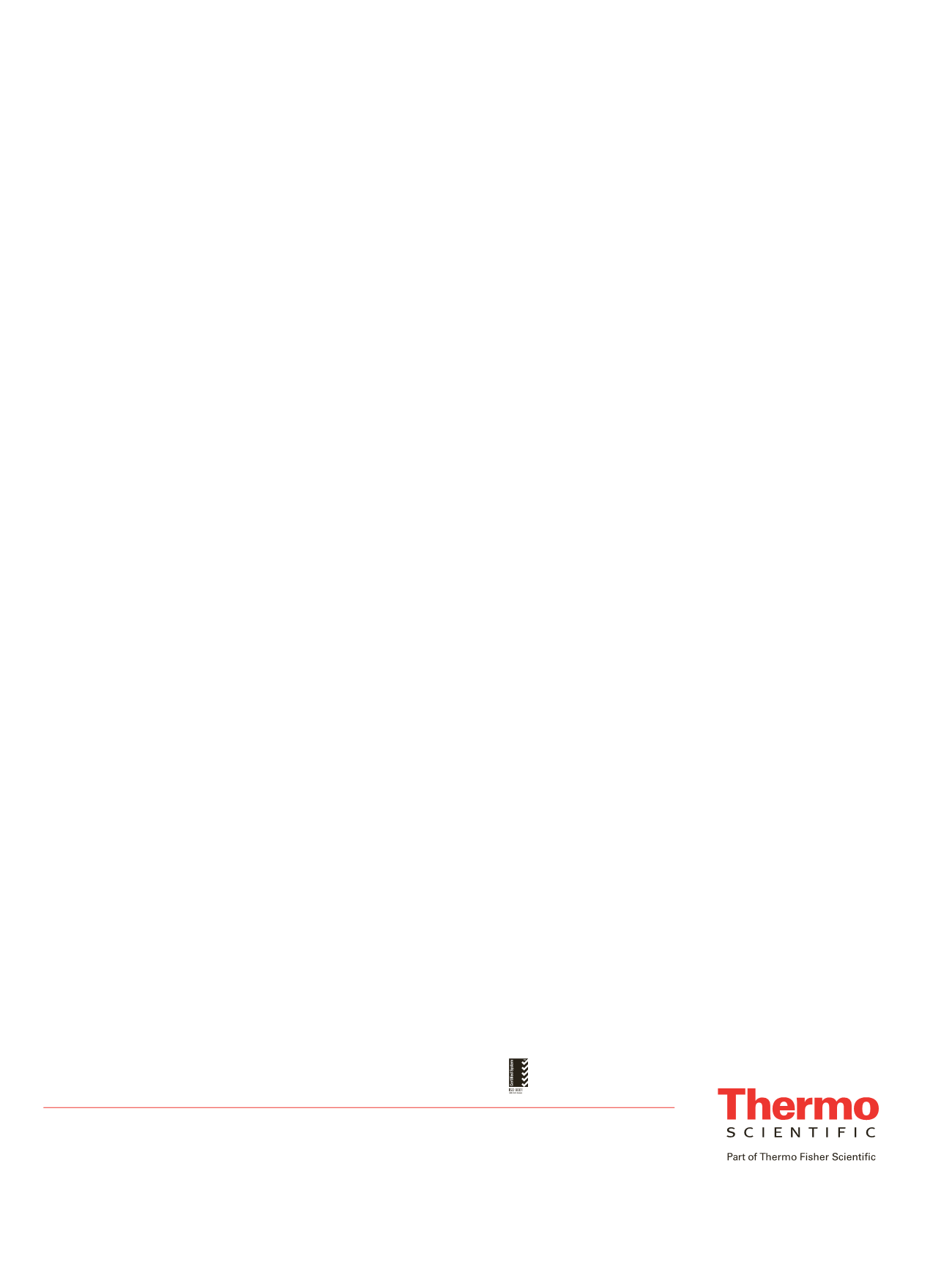
AN10339_E 07/13S
Africa-Other
+27 11 570 1840
Australia
+61 3 9757 4300
Austria
+43 1 333 50 34 0
Belgium
+32 53 73 42 41
Canada
+1 800 530 8447
China
+86 10 8419 3588
Denmark
+45 70 23 62 60
Europe-Other
+43 1 333 50 34 0
Finland/Norway/Sweden
+46 8 556 468 00
France
+33 1 60 92 48 00
Germany
+49 6103 408 1014
India
+91 22 6742 9494
Italy
+39 02 950 591
Japan
+81 45 453 9100
Latin America
+1 561 688 8700
Middle East
+43 1 333 50 34 0
Netherlands
+31 76 579 55 55
New Zealand
+64 9 980 6700
Russia/CIS
+43 1 333 50 34 0
South Africa
+27 11 570 1840
Spain
+34 914 845 965
Switzerland
+41 61 716 77 00
UK
+44 1442 233555
USA
+1 800 532 4752
©2012 Thermo Fisher Scientific Inc. All rights reserved. ISO is a trademark of the International Standards Organization.
All other trademarks are the property of Thermo Fisher Scientific Inc. and its subsidiaries. This information is presented as an
example of the capabilities of Thermo Fisher Scientific Inc. products. It is not intended to encourage use of these products in any
manners that might infringe the intellectual property rights of others. Specifications, terms and pricing are subject to change.
Not all products are available in all countries. Please consult your local sales representative for details.
Thermo Fisher Scientific,
Austin, TX USA is ISO 9001:2008 Certified.
Method precision and determination of recovery at
trace level
The measured liquor samples were spiked by two low
concentration levels at 0.1 and 0.3 mg/L, and measured
five times at each level. The results show that the average
recovery even at trace level was 83.2-110%, and the
relative standard deviation range (RSD, n=5) was 1.3 to
8.4%. The recovery and precision data results are shown
in Table 5.
Eight samples of commercially available liquor brands
were analyzed using the above described method. The
concentrations of phthalate ester residues found are
shown in Table 6.
The samples tested showed that DIBP, DBP, DEHP are
prevalent, and DEHP was found in all the analyzed white
wine samples.
Conclusions
In this study for the determination of phthalate plasticizer
residues in liquor, the ISQ Series GC-MS met the special
testing requirements set by the China method GB/T
21911-2008 for determining phthalates in food.
The sample preparation method for alcoholic beverages
was quick and easy to accomplish. Using n-hexane as
extraction solvent provided constant and high recoveries
after removal of the major part of ethanol, even at trace
level. The ISQ Series GC-MS measurement method is
highly accurate as demonstrated with precise calibrations
and spiked liquor samples.
The ISQ Series GC-MS method setup using full scan has
good usability, provides the necessary high sensitivity,
and delivers the complete spectrum information for
identification and confirmation of a wide variety of
possible phthalate ester contaminations by comparison
with the NIST mass spectral library. The peak area
integration on the uniquely selective PAE compound
ions provided the precise, fast, and interference-free
quantitative determination.
The routine quantitation of commercial samples was
accomplished using TraceFinder software, which allowed
the quantitation of the coeluting DNP isomers with the
same high precision as the other PAE compounds under
investigation.
The described determination method for phthalate
plasticizers using the ISQ Series GC-MS is very sensitive
and accurate. It is easy to perform, rapid, and covers
a wide linear range to meet the need for trace level
detection of PAEs in beverages.
References
[1] China method GB/T 21911-2008 for the
"Determination of phthalates in food”.
[2] Shao, Dongliang, Determination of Phthalate Ester
Residues in White Spirit by GC-MS, Chemical
analysis and meterage, 19(6) (2010) 33-35.


